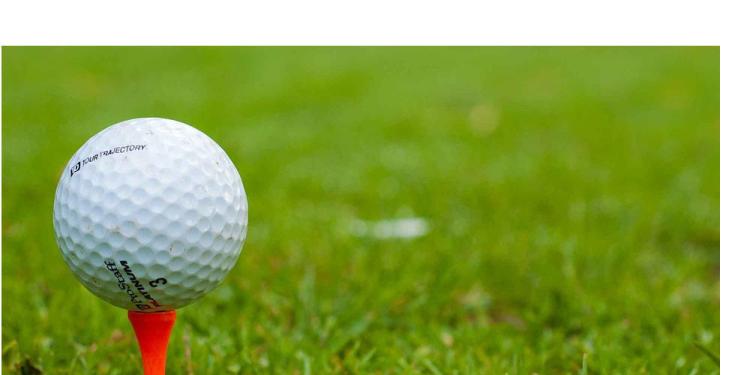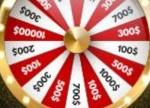A Short History of Golf Balls
Posted: January 2, 2020
Updated: January 14, 2020
-
The Scots claim the game as thiers
-
Balls went from wood to feathers in leather
-
Dimples are a thing in golf

Here’s a short history of golf balls. With the game now more popular than ever, let’s have a look back at how the simple golf ball came about.
Introduction: A Short History of Golf Balls
Anyways, let’s have a look at a short history of golf balls. Today these balls have to meet the specs and standards of the United States Golf Association and the R&A of St. Andrews, Scotland. The funny thing is that between 1931 and 1988, both organizations had differing standards, with the US balls being slightly larger. There’s a joke in there somewhere.
The Beginning of Golf
The game probably originated in Scotland, though a game involving the use of a stick and ball predates the Middle Ages for several centuries. There is a Roman stick and ball game called “paganica”. The general thinking is that modern golf is the bastard child of hockey. First mentioned 1457, when it was banned by the Scottish Parliament, for interfering with archery practice. This gives an indication that it was probably popular at the time. Not that the ban worked. Though it was to continue to be banned during the reigns of King James II of Scotland (r. 1437-1460), James III (r. 1460-1488) and James IV (r. 1488-1513) in 1471 and 1491, respectively. The ban was ignored even by His Majesty James IV. He was known to have been an enthusiastic golfer. According to online sportsbook news in the UK, apparently the game was popular with all classes of people.

Early History
The most probable precursor to golf, was a game played with sticks and a leather ball. Known as “Kolven” or “Kolf”, the game featured in several illustrations. Having said that, the Chinese were also in on the act, having a similar game during the Song Dynasty (960-1279). The British too had a game called Cambuca which was also played with a mallet and a small wooden ball. This game was called by a succession of names, starting with “gowf, “goff” and finally “golf”. Though it should be pointed out that by the time this came about, the game in Scotland was already well established. Up until this period, golf balls were probably made of hardwood, like Box or Beech.
The “Featherie”
A short history of golf balls begins in earnest in 1618. This is when a golf ball maker called James Melvill from St. Andrews managed to secure the exclusive production rights to manufacture golf balls from King James VI and I (r.1567-1625). The rights were for 21 years. This new type of golf ball was called the “Featherie” and those which didn’t bear his mark were made illegal.
Manufaturing the Featherie
It consisted of a sack of three pieces of leather sown together and stuffed with wet goose feathers. Upon drying, as the leather contracted, the feathers expanded, thus creating a rounded shape. Apparently they didn’t last very long. This new type of ball was very labor intensive to produce. On the whole a craftsman could only make four per day. Though these ball could fly some considerable distances, they were rendered useless if they got wet. Along with being prone to damage when struck incorrectly, the sheer cost of ball caused golf to become a game for the rich. Talking of being rich, if you want a great chance to win on sports, then head over to Betsson. Apparently, the Dutch made the best Featheries and they were in great demand in Scotland.
The Gourlay
When Melville’s monopoly expired, many ball makers appeared. But the most desirable Featherie of all was made by the Gourlays. The name Gourlay soon became the synonym for “the finest Featherie money could buy.” By the turn of the century, the Featherie was more or less “standardized”. At 1 ½ inches in diameter and weighing about 1.4 ounces (39.7 grams) to 1.6 ounces (45.4 grams) it largely corresponded to the size and weight of a modern golf ball. The final stage of manufacture was the treatment with some kind or white pigment or chalk to help with visibility.

The Gutta Percha Ball
Next up into the history of golf balls is a young Scottish divinity student Robert Adam Paterson (1829-1904). One day in 1842, his father received a package from India. The valuable object inside was protected by protected by shavings of gutta percha. This is a substance that resembles rubber. Apparently he rolled some up into a ball, painted it white and set off for St Andrew’s golf course. Unfortunately, the ball fell apart pretty quickly. Later his brother continued the experiments and eventually the “Guttie was created. By the 1860’s the reign of the Featherie was over as the Guttie became the ball of choice. Because the production cost was so low, the sport of golf was transformed. The game was suddenly affordable to all classes. Though the ball had some problems, it was the ball of choice from the mid-19th to the early 20th century around the world.
Rubber Wound Ball
In 1899, the American inventor, Coburn Haskell (1868-1922) secured a patent for a ball that was made of a solid rubber-wound core that was covered by gutta percha. It’s performance was outstanding and and it flew over 20 yards further than the 100% gutta percha ball. Then, according to online sportbook news in the UK, in 1908, Englishman William Taylor got a patent on indentations on the golf ball which was able to travel even greater distances. Up until this point, golf balls had a covering of protruding dimples. Now all golf balls used the same dimple (with the dimples going inwards as opposed to outwards) pattern known as the Atti Pattern until the early 1970s. This helped control long distant flight, as well as allowing backspin to enable the ball to stop more rapidly on landing.

Modern Golf Ball
The next leap in golf ball design came about thanks to American chemical engineer named James R. Bartsch (1933-1991). His aim was to reduce the manufacturing cost. And thus was born the concept of the solid-moulded ball. By the time he had secured his patent in 1967, another company, Spalding had produced their own one piece molded ball. Finally in 1972 Spalding produced the definitive golf ball, the
two-piece “Top-Flite.” Covered with the new DuPont material, Surlyn, it addressed every issue a golfer might find. In 2000, Tiger Woods won the Open Championship playing with Nike solid construction ball called the Tour Accuracy. Thanks to this, the ball became a massive success. Today there are over 1000 different types of golf ball. All are designed for a particular way of playing. Something those who bet on golf with Betsson already know. And thus ends our short history of golf balls.












